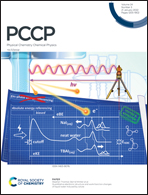The corona of protein–gold nanoparticle systems: the role of ionic strength†
Abstract
The nature of the nanoparticle–protein corona is emerging as a key aspect in determining the impact of nanomaterials on proteins and in general on the biological response. We previously demonstrated that citrate-stabilized gold nanoparticles (Cit-AuNPs) interact with β2-microglobulin (β2m) preserving the protein native structure. Moreover, Cit-AuNPs are able to hinder in vitro fibrillogenesis of a β2m pathologic variant, namely D76N, by reducing the oligomeric association of the protein in solution. Here, we clarify the characteristics of the interaction between β2m and Cit-AuNPs by means of different techniques, i.e. surface enhanced Raman spectroscopy, NMR and quartz crystal microbalance with dissipation monitoring. All the results obtained clearly show that by simply changing the ionic strength of the medium it is possible to switch from a labile and transient nature of the protein–NP adduct featuring the so-called soft corona, to a more “hard” interaction with a layer of proteins having a longer residence time on the NP surface. This confirms that the interaction between β2m and Cit-AuNPs is dominated by electrostatic forces which can be tuned by modifying the ionic strength.



 Please wait while we load your content...
Please wait while we load your content...